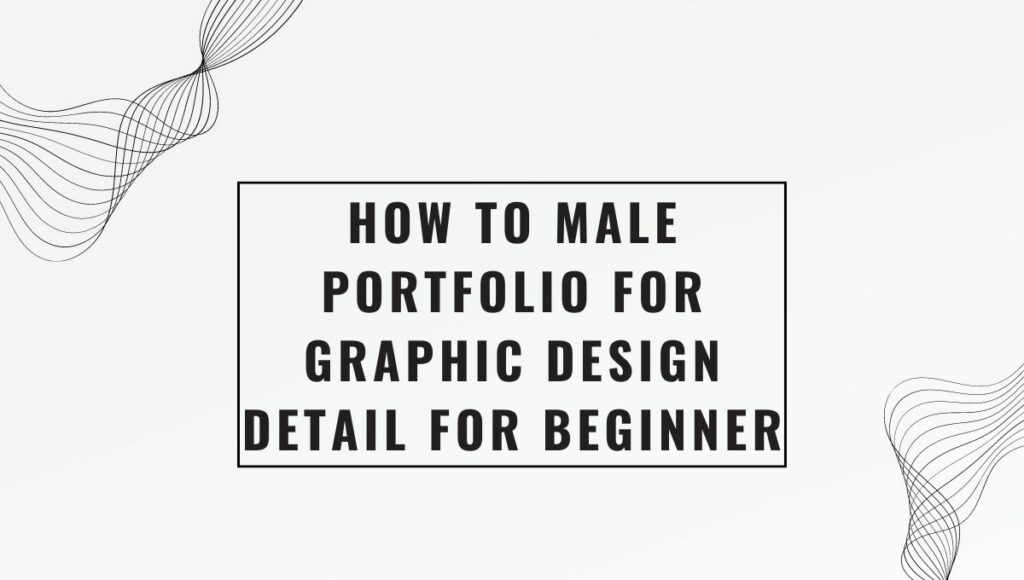how to male portfolio for graphic design
Any graphic designer who wants to exhibit their work and draw in potential clients or companies must first create a portfolio. Here are some pointers for building a potent graphic designer portfolio:
Determine your target audience:
It’s crucial to think about who your target audience is before you begin building your portfolio. According to the requirements and preferences of your future clients or companies, your portfolio should be customized. You might want to concentrate on presenting your logo and branding work if you’re asking for a position with a branding firm, for instance. If you’re a freelancer, on the other hand, you could want to emphasize a variety of tasks to demonstrate your adaptability and capacity to work on many sorts of projects.
Select your best work:
Your strongest work should be shown in your portfolio. Pick a few projects that show off your knowledge and talents, as well as your imagination and problem-solving ability. To demonstrate your design process and methodology, make sure to blend finished products with design thoughts.
Think about the kind of work you wish to undertake in the future while choosing your work. Include some examples of your package design work, for instance, if you’re interested in working in that area.
Organize your work:
To make it simpler for prospective clients or companies to explore your portfolio, categorise your work. Among them could be divisions for branding, print, online, packaging, etc., design. Your audience will have an easier time finding samples of your work that are pertinent to their requirements if you categories your work.
Show your process:
In your portfolio, don’t be scared to display your method. Sketches, wireframes, and other behind-the-scenes work that exhibits your creativity and problem-solving abilities can be included. Explicitly describing your technique may also aid prospective clients or employers in comprehending your method of design and how you operate.
Use high-quality visuals:
Make sure the photographs you choose to display your work are of a good caliber and accurately reflect your concepts. To establish a unified appearance and feel, use consistent formatting and style throughout your portfolio. To develop a visually appealing portfolio, you can use programmes like Adobe InDesign or Canva.
Include a brief explanation:
To provide context and justify your design choices, offer a succinct description of each project. This might aid prospective customers or employers in comprehending your strategy and the logic behind your ideas. Be succinct and precise in your descriptions, emphasising the major goals and difficulties of each project.
Keep your portfolio up-to-date:
Regularly add fresh work to your portfolio and get rid of previous ones that don’t anymore reflect your abilities and capabilities. By doing so, you may highlight your most recent work and keep your portfolio current. When you finish important new projects or every six to twelve months, think about upgrading your portfolio.
Your portfolio should, in general, demonstrate your abilities, originality, and capacity for problem-solving in design. You may successfully showcase your value as a graphic designer and draw in potential clients or jobs by making a carefully maintained portfolio.
Digital marketing course detail: CLick Here











